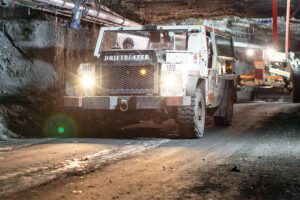The importance of applying effective first aid in the first minutes after an accident is paramount to the outcome of the casualty. Daniel Coad and Clinton Jury report.
Many of us will have heard the adage “any first aid is better no first aid”, but nothing will test our people and their training more than responding well to a real life incident. This is often only the thin edge of the wedge and we need to question how we got there in the first place.
Is training and having the latest rescue and medical equipment enough?
If the basic principles of first aid are not addressed, and your approach to first aid does not include them as part of a broader, holistic process, then the possibility of a fatality is heightened, as well as injury to those who may not even be involved in the initial incident.
What is first aid?
First aid is the immediate treatment or care given to someone suffering from an injury or illness until more advanced care is accessed or they recover.
The aims of first aid are to:
- Preserve life;
- Prevent illness or injury from becoming worse;
- Relieve pain, if possible;
- Promote recovery; and,
- Protect the unconscious.
Where do you start?
The very first thing to consider is the risk assessment processes in place for your workplace. A few topics for consideration are:
- Is your workplace remote? A remote workplace is one that is more than a 20 minute drive away from an ambulance station that is staffed by paid paramedics or 20 minutes from definitive medical care, e.g. you may be deep in the mine so it’s the time to get the casualty from where they are to where definitive medical care is (including extraction).
- Is your workplace is a high-risk workplace? Workplaces that are considered high risk include those that feature the use of hazardous equipment (cranes, trucks, forklifts, tractors, power presses, vehicle hoists), the regular use of hazardous and/or dangerous substances, the risk of falls of over two metres, working in confined spaces, welding, and abrasive blasting materials – items that you are no doubt bound to find on a daily basis in and around Australian mining sites!
With the above in mind there are going to be specific risks to the mining industry which require acknowledgement, and steps in place to address them. This is not an exhaustive list but the following should be considered:
- Crush injuries;
- Hypoxia;
- Chemical poisoning;
- Motor vehicle accidents;
- Electrocution;
- Asthma;
- Mental health – are staff coming to work in the best frame of mind and how would your staff recognise this?; and,
- Sexual health.
The aim of any risk assessment process should to remove a hazard or reduce the level of its risk by adding precautions or control measures as necessary. By doing so, you create a safer and healthier workplace and reduce the need to apply first aid as an emergency response. A thorough Risk Assessment should:
- Create awareness of hazards and risks;
- Identify who may be at risk (employees, cleaners, visitors, contractors etc.);
- Determine if existing control measures are adequate or if more should be done;
- Prevent injuries or illnesses when done at the design or planning stage; and,
- Prioritise hazards and control measures.
Once you have reviewed the Risk Assessment the next crucial step is to plan.
A good plan will take some time to develop and it should not be undertaken lightly. The time of the first injury is not an appropriate occasion to start planning. Your plan should include the findings of your Risk Assessment and a needs analysis of staffing skills set, training, records and available equipment both rescue and medical and the positioning of these people and supplies.
What to prioritise?
This is the point where equipment and supplies are purchased and training through an accredited and reputable RTO (Registered Training Organisation) is sourced. While this may seem obvious and simple, the reality is that the bill for this will quite likely be significant and there may be a need to budget.
If the budget is unavailable, the acquisition may need to be revised or spread over a period of time. In the latter case the required equipment and supplies will need to be prioritised. This is achieved by first selecting the equipment and supplies that MUST be acquired, and secondly which of the equipment or supplies will do the most good for the most people. Another frequently forgotten area of funding may be the requirement to renovate or modify an existing room or area that is to become the First Aid Room or First Aid Station.
Let’s do it!
It’s now time to implement the plan and see if it works. Essentially this is a matter of installing First Aid Kits, stocking shelves, testing equipment and using simulated patients in different areas with differing injuries to see how, and if, it all works. Anything that doesn’t work as intended will need to be modified and the simulated incident repeated. This process is repeated until the entire plan has been tested and proven to work in numerous situations. You may choose to engage an RTO that specialises in first aid to assist with this drill process. First Aid Drills take first aid theory out of the classroom and apply that knowledge in a range of safe scenarios in work environments as a preparation strategy for actual incidents requiring a first aid response – much like a fire drill.
This needs to be thorough to ensure that where practicable, all aspects of the plan are tested. (The local ambulance service could be invited to participate in an exercise so they are familiar with the internal practices and locations of the First Aid Room and access points.)
Once the plan has been finalised all persons in the workplace, including customers and visitors, must be made aware of how to access the First Aid Service.
The final part of the plan should be processes to evaluate the effectiveness of the First Aid Service to ensure that the plan is in fact meeting its aim – to ensure a safe workplace.
Common methods of evaluating the effectiveness of the plan are to:
- Interview random patients to gauge their perception of their first aid experience, gain feedback, and debrief first aiders after incidents;
- Repeat the first step;
- Analyse potential risks regularly to ensure nothing in the workplace has changed;
- Conduct frequent meetings with the first aid personnel to ‘brain storm’ improvements to the First Aid Service;
- Seek outside consultancy via First Aid Audits;
- Stagger refresher training so at least one first aider is retrained yearly to ensure the pool of knowledge is up to date;
- Conduct regular simulated exercises covering a range of locations and injuries; and,
- Keep an accident/incident/near miss database.
All the best equipment and well-trained personnel in the world can be rendered useless by an ineffective plan.
The key to a safe workplace and an efficient First Aid Service is:
- A thorough and exhaustive analysis of the workplace;
- A well thought out delivery plan;
- Adequate and appropriate first aid assets; and,
- Tested and well-rehearsed First Aid Service.
Prevention is far preferable to casualty management. We must be prepared for the worse and by planning, evaluating, updating our knowledge base, and through training. By continually improving our process and procedures we will all endeavour to ensure the wellbeing of our employees.
Red Cross College, a Registered Training Organisation, is the training and education arm of Australian Red Cross. Red Cross is the world’s largest provider of first aid training in the world. All bookings and enquiries can be directed to 1300 367 428 or visit redcross.edu.au for more information.













Add Comment